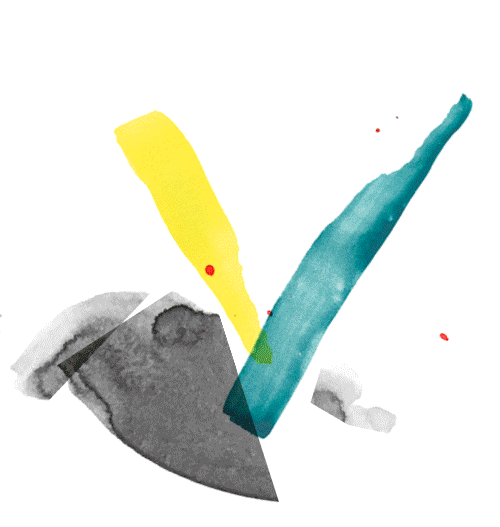

Sign up for our newsletters. You can change the settings or unsubscribe at any time.
Thank you for your subscription. We have sent you an e-mail with a confirmation link.


exp. 1
exp. 2
exp. 3

Bartolina Xixa
Venue: Gropius Bau
Bartolina Xixa
Born 2017 in Tilcara, AR
Bartolina Xixa is an Andean drag queen who was born in the province of Jujuy, northern Argentina, on November 28, 2017. She is a persona created by Coya artist and dancer Maximiliano Mamani (born in 1995, also in Jujuy) out of an impulse to question the colonial origins of subaltern identities in the cultures of the South and the associated imposition of the categories of race and gender. Xixa is a tribute to the Bolivian revolutionary leader Bartolina Sisa Vargas (c.1750–82), an Aymara woman who fought alongside her husband Túpac Katari (c. 1750–81) against the colonial occupation of present-day Peru and Bolivia in the eighteenth century and was eventually executed by Spanish troops. Through Xixa, Mamani evokes Indigenous struggle as a foundation for undoing patriarchal and racist paradigms, while also paying homage to the women of his family and the people of the Quebrada de Humahuaca valley in Jujuy. This region has been persistently subjugated by hegemonic power structures that have denied local Indigenous peoples visibility and access to resources through the imposition of white culture and capitalism.
The music video Ramita Seca, La Colonialidad Permanente [Dry Twig, The Permanent Coloniality, 2019] shows Xixa dancing in the middle of a dumping ground in a self-created choreography. The music and lyrics are by folk singer Aldana Bello. Dressed in traditional attire amidst worn-out mattresses, garbage bags, and dust, Xixa uses movements that suggest ancestral remedies to colonial extractivist violence. The work functions as a call for the dissident bodies affected by the predatory systems in place in the former colonies to take a political stance and to combat socioeconomic inequalities and structural violence as a means of healing colonial wounds.
Beatriz Lemos
Flávio de Carvalho: Fazenda Capuava
Archive of Lisette Lagnado
Photographs
Feminist Health Care Research Group
Web archive
Solidarity and Storytelling. Rumors against Enclosure
María Berríos
Essay
Freiheit für Chile!
Anonymous
Photo album
COVID-19 VIDEOS
Carlos Motta
Video
Fragments of the Artist’s Diary, Berlin 11.2019–1.2020
Virginia de Medeiros
Diary
By using this website you agree to the use of cookies in accordance with our data privacy policy.

Bartolina Xixa
Venue: Gropius Bau
Bartolina Xixa
Born 2017 in Tilcara, AR
Bartolina Xixa is an Andean drag queen who was born in the province of Jujuy, northern Argentina, on November 28, 2017. She is a persona created by Coya artist and dancer Maximiliano Mamani (born in 1995, also in Jujuy) out of an impulse to question the colonial origins of subaltern identities in the cultures of the South and the associated imposition of the categories of race and gender. Xixa is a tribute to the Bolivian revolutionary leader Bartolina Sisa Vargas (c.1750–82), an Aymara woman who fought alongside her husband Túpac Katari (c. 1750–81) against the colonial occupation of present-day Peru and Bolivia in the eighteenth century and was eventually executed by Spanish troops. Through Xixa, Mamani evokes Indigenous struggle as a foundation for undoing patriarchal and racist paradigms, while also paying homage to the women of his family and the people of the Quebrada de Humahuaca valley in Jujuy. This region has been persistently subjugated by hegemonic power structures that have denied local Indigenous peoples visibility and access to resources through the imposition of white culture and capitalism.
The music video Ramita Seca, La Colonialidad Permanente [Dry Twig, The Permanent Coloniality, 2019] shows Xixa dancing in the middle of a dumping ground in a self-created choreography. The music and lyrics are by folk singer Aldana Bello. Dressed in traditional attire amidst worn-out mattresses, garbage bags, and dust, Xixa uses movements that suggest ancestral remedies to colonial extractivist violence. The work functions as a call for the dissident bodies affected by the predatory systems in place in the former colonies to take a political stance and to combat socioeconomic inequalities and structural violence as a means of healing colonial wounds.
Beatriz Lemos
II: La Solidaridad va Más Allá de un Concepto. Entre las Curadoras de la XI Berlin Biennale
Lisette Lagnado, Agustín Pérez Rubio
Conversation
Weaving Solidarity
Renata Cervetto and Duygu Örs
Q&A
New Look
Flávio de Carvalho
Performance
Invitation to the Species: Cecilia Vicuña
Tamaas / Cecilia Vicuña
Podcast
III: La familia son quiénes se alegran con nuestros actos diarios. Detrás de las curadoras de la XI
María Berríos, Agustín Pérez Rubio
Conversation
Solidarity and Storytelling. Rumors against Enclosure
María Berríos
Essay
By using this website you agree to the use of cookies in accordance with our data privacy policy.

Bartolina Xixa
Venue: Gropius Bau
Bartolina Xixa
Born 2017 in Tilcara, AR
Bartolina Xixa is an Andean drag queen who was born in the province of Jujuy, northern Argentina, on November 28, 2017. She is a persona created by Coya artist and dancer Maximiliano Mamani (born in 1995, also in Jujuy) out of an impulse to question the colonial origins of subaltern identities in the cultures of the South and the associated imposition of the categories of race and gender. Xixa is a tribute to the Bolivian revolutionary leader Bartolina Sisa Vargas (c.1750–82), an Aymara woman who fought alongside her husband Túpac Katari (c. 1750–81) against the colonial occupation of present-day Peru and Bolivia in the eighteenth century and was eventually executed by Spanish troops. Through Xixa, Mamani evokes Indigenous struggle as a foundation for undoing patriarchal and racist paradigms, while also paying homage to the women of his family and the people of the Quebrada de Humahuaca valley in Jujuy. This region has been persistently subjugated by hegemonic power structures that have denied local Indigenous peoples visibility and access to resources through the imposition of white culture and capitalism.
The music video Ramita Seca, La Colonialidad Permanente [Dry Twig, The Permanent Coloniality, 2019] shows Xixa dancing in the middle of a dumping ground in a self-created choreography. The music and lyrics are by folk singer Aldana Bello. Dressed in traditional attire amidst worn-out mattresses, garbage bags, and dust, Xixa uses movements that suggest ancestral remedies to colonial extractivist violence. The work functions as a call for the dissident bodies affected by the predatory systems in place in the former colonies to take a political stance and to combat socioeconomic inequalities and structural violence as a means of healing colonial wounds.
Beatriz Lemos
A World Without Bones
Agustín Pérez Rubio
Hatred Among Us
Lisette Lagnado
Essay
El primer nueva corónica y buen gobierno
Felipe Guamán Poma de Ayala
Chronicle
Expresiones de la locura: el arte de los enfermos mentales
Hans Prinzhorn
Monograph
II: La Solidaridad va Más Allá de un Concepto. Entre las Curadoras de la XI Berlin Biennale
Lisette Lagnado, Agustín Pérez Rubio
Conversation
„Klaus Eckschen: Hörspiel“
Die Remise
Hörspiel
By using this website you agree to the use of cookies in accordance with our data privacy policy.

Bartolina Xixa
Venue: Gropius Bau
Bartolina Xixa
Born 2017 in Tilcara, AR
Bartolina Xixa is an Andean drag queen who was born in the province of Jujuy, northern Argentina, on November 28, 2017. She is a persona created by Coya artist and dancer Maximiliano Mamani (born in 1995, also in Jujuy) out of an impulse to question the colonial origins of subaltern identities in the cultures of the South and the associated imposition of the categories of race and gender. Xixa is a tribute to the Bolivian revolutionary leader Bartolina Sisa Vargas (c.1750–82), an Aymara woman who fought alongside her husband Túpac Katari (c. 1750–81) against the colonial occupation of present-day Peru and Bolivia in the eighteenth century and was eventually executed by Spanish troops. Through Xixa, Mamani evokes Indigenous struggle as a foundation for undoing patriarchal and racist paradigms, while also paying homage to the women of his family and the people of the Quebrada de Humahuaca valley in Jujuy. This region has been persistently subjugated by hegemonic power structures that have denied local Indigenous peoples visibility and access to resources through the imposition of white culture and capitalism.
The music video Ramita Seca, La Colonialidad Permanente [Dry Twig, The Permanent Coloniality, 2019] shows Xixa dancing in the middle of a dumping ground in a self-created choreography. The music and lyrics are by folk singer Aldana Bello. Dressed in traditional attire amidst worn-out mattresses, garbage bags, and dust, Xixa uses movements that suggest ancestral remedies to colonial extractivist violence. The work functions as a call for the dissident bodies affected by the predatory systems in place in the former colonies to take a political stance and to combat socioeconomic inequalities and structural violence as a means of healing colonial wounds.
Beatriz Lemos
El primer nueva corónica y buen gobierno
Felipe Guamán Poma de Ayala
Chronicle
Weaving Solidarity
Renata Cervetto and Duygu Örs
Q&A
Undocumented Rumours and Disappearing Acts from Chile
María Berríos
Essay
O Bailado do Deus Morto
Flávio de Carvalho
Play
Being in Crisis together – Einander in Krisen begegnen
Feminist Health Care Research Group (Inga Zimprich/Julia Bonn)
Online workshop
A Moment of True Decolonization / Episode #6: Sinthujan Varatharajah. Constructing the Tamil Eelam State
The Funambulist / Sinthujan Varatharajah
Podcast
By using this website you agree to the use of cookies in accordance with our data privacy policy.
By using this website you agree to the use of cookies in accordance with our data privacy policy.




